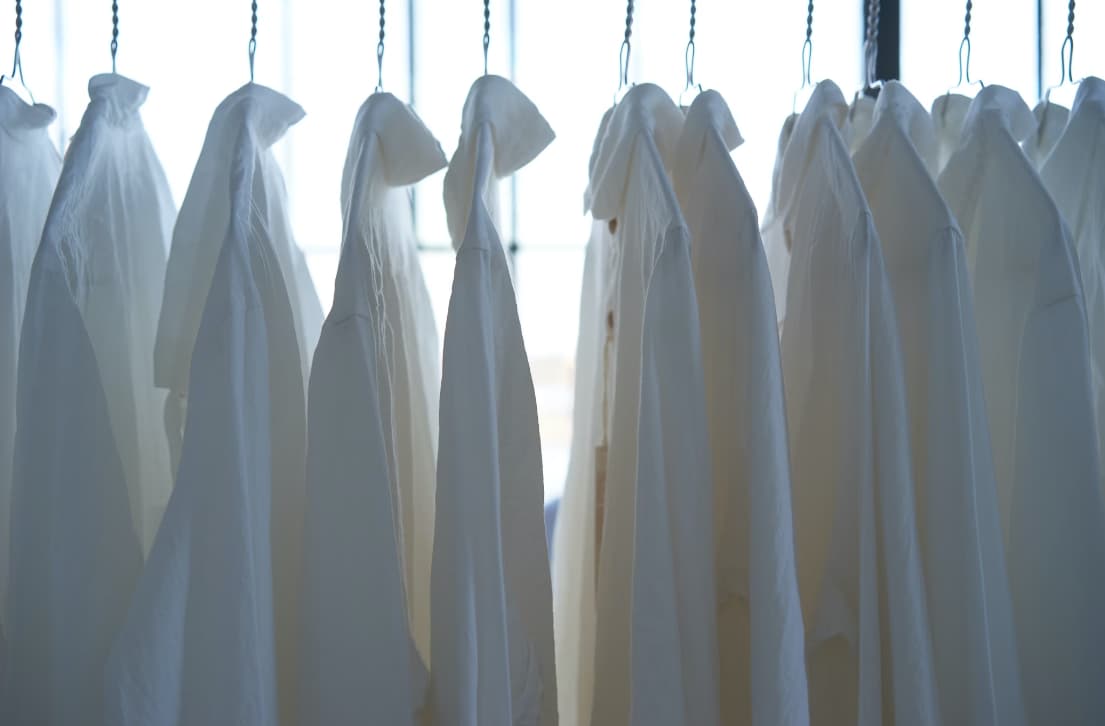Hey there laundry fans! I want to chat about a nifty little product I recently tried out – hydrogen peroxide! More specifically using it to brighten up clothes.
You’ve likely seen those brown bottles of the stuff in medicine cabinets for disinfecting cuts. But I tried getting my whites whiter and colors brighter with it! Now I know what you’re thinking – wait isn’t that stuff pretty strong?
Does Hydrogen Peroxide Bleach Clothes?

Well yes, regular hydrogen peroxide solution could damage fabrics. But diluted properly it works great to fade stains and yellowing over time! I did tons of label checking and spot testing beforehand to be safe.
I wouldn’t suggest just dumping it straight onto your laundry unless you want holy jeans and polka-dot shirts! The key is using care – start with small amounts in each wash load and work upwards slowly.
What I love about hydrogen peroxide is it’s way less harsh than straight-up bleaches which nuke fabric, yet still effectively fades discoloration. The bubbling oxygen reaction just lifts stains differently.
It reminds me of a middle school science project with all those foam bubbles bursting out when it reacts! Kind of wild seeing that happen on grass stains and tomato sauce. Just let it sit for a few minutes before tossing in the wash.
Now it didn’t get everything out completely in one go, takes a few washings for the gradual brightening magic to happen. But that’s way safer than bleach just ripping dye right out immediately.
Over time hydrogen peroxide brought my white socks back to crisp-looking status, rescued a yellowed old undershirt, and even faded some sneaky blood and rust stains! Pretty handy stuff!
The only bummer is it isn’t so great on oil, grease, or makeup stains which is a shame. Also can’t go crazy with it on wool, silks, and stretch fabrics – it is still a chemical after all.
But all in all, I’d call it a win for an occasional brightening boost on laundry days! Just be smart – check those fabric labels, spot-test new items, and start slow and diluted. Then enjoy the bubbles!
So here’s my laundry fan experience on brightening with hydrogen peroxide! Have you tried using it for stain removal and discoloration? Hit me back, would love to hear how it worked for you!
Hydrogen peroxide has become an increasingly popular alternative to harsh chlorine bleaches for whitening clothes and removing stains. But how effective is it? Can it be used on all fabric types and colors? Here is a comprehensive guide on using hydrogen peroxide to bleach clothes.
What is Hydrogen Peroxide and How Does it Bleach Fabrics?
Hydrogen peroxide (H2O2) is a chemical compound made up of hydrogen and oxygen. In its pure form, it is a pale blue liquid. As a household cleaning product, it is usually available as a 3-10% water solution.
Unlike chlorine bleach which contains chlorine, hydrogen peroxide is an oxygen-based bleach. It works by reacting with and breaking down the dye molecules in the fabric through an oxidation process. This causes the fabric to become lighter in color.
In higher concentrations over 10%, hydrogen peroxide solutions are very effective at bleaching and whitening clothes. However, at the standard 3% solution, it does not have enough bleaching power on its own.
Using Hydrogen Peroxide to Bleach White Clothes
Hydrogen peroxide is very useful for whitening and brightening white clothes:
- It helps restore dingy whites to a crisp white.
- Over time, it can remove yellow discoloration from white fabric.
- It enhances the effects of laundry detergent to boost whiteness.
How to Use Hydrogen Peroxide on Whites?
- Check clothing labels first and test colored trims. Hydrogen peroxide could bleach and discolor dyed threads/embellishments.
- Add 1 cup of 3% hydrogen peroxide to the bleach dispenser or detergent drawer.
- Wash whites on the hottest setting safe for the fabrics. The heat activates and enhances hydrogen peroxide bleaching.
- For extra whitening, soak whites in a dilute peroxide solution before washing.
Using Hydrogen Peroxide on Whites
Pros
- Very effective at removing stains in fruit juices, teas, and wines without harsh chemicals.
- Gently lifts away yellow discoloration over time.
- Brightens dingy whites.
- More environmentally friendly than chlorine bleach.
- Works well in combination with detergents.
Cons
- Not as instant or powerful a bleach as chlorine bleach.
- Higher concentration solutions can damage fabrics.
Using Hydrogen Peroxide to Bleach Colored Clothes
Hydrogen peroxide can also be used to brighten up colored clothing, but extra care must be taken.
How to Use Hydrogen Peroxide on Colors
- Always test colored fabrics first on inside seams before full use.
- Use very diluted solutions – 1 cup hydrogen peroxide in a full wash load.
- Check clothing labels and wash in cool to warm water. Hot water can accelerate bleaching.
- Use a color-safe bleach setting if your machine has one.
- Add hydrogen peroxide to the detergent drawer, not the bleach dispenser for a gentler distribution in water.
- Wash darker colors separately from lighter colors.
Pros
- Helps revive faded black and dark-colored clothes.
- It can lighten and brighten colors like red, pink, and purple.
- Removes stains well without harsh smells.
Cons
- Risk of over-bleaching colors if concentrations are too high.
- Some sensitive pigment dyes can get stripped away. Always test first!
Will Hydrogen Peroxide Bleach Black Clothes?
Black fabric is riskier because any lightening of the deep black dye will be very noticeable.
- Start with very diluted peroxide – 1⁄2 to 1 cup in a full load.
- Monitor the effects and increase concentration slowly if needed.
- Expect subtle brightening of fading, not drastic bleaching.
Using Hydrogen Peroxide to Remove Stains
Hydrogen peroxide is an effective stain remover for white and colorfast-colored fabrics. It works very well on organic stains.
How to Use Hydrogen Peroxide for Stain Removal
- Always test colored fabrics first for colorfastness.
- Apply diluted hydrogen peroxide directly to the stain.
- Let it soak for 10-15 minutes to lift and bubble away the stain.
- Launder, as usual, adding 1 cup hydrogen peroxide to wash.
- For set-in stains, pre-soak the entire item in a peroxide solution before washing.
Peroxide works well on stains like:
- Fruit juices
- Wine
- Blood
- Grass
- Coffee and tea
- Tomato sauce
Pros
- No harsh fumes or smells with hydrogen peroxide.
- Helps avoid other stronger chemical stain removers.
- Oxidase bubbles help lift stains from fabric.
- Whitens fabric while removing stains.
Cons
- Not effective on grease, oil, or dye transfer stains. Requires other solvents.
- Can take longer to work than chlorine bleach.
Whitening White Clothes Step-by-Step
Follow this simple step-by-step process to gradually whiten and brighten white clothes over time:
- Sort clothes – wash whites separately from colors. Bleach transfers easily onto dye particles.
- Check clothing labels – look for bleach warnings or “do not bleach” guidance.
- Test delicate fabrics. Rub a cotton bud with diluted peroxide inside the seams first.
- Fill the bleach dispenser with 1 cup of hydrogen peroxide for a full load.
- Wash whites on the hottest setting allowed for the fabrics. Heat activates the bleaching reaction.
- For extra whitening, dilute 1 part peroxide in 4 parts water. Soak whites before washing.
- Add a laundry booster like borax or washing soda to the wash cycle. This enhances stain removal.
- Repeat the bleaching process regularly to lift away yellowing and stains from white clothes and sheets.
10 Best Hydrogen Peroxide Alternatives for Bleaching
While hydrogen peroxide is gentler than chlorine bleach, it still carries a risk of damaging fabrics. Some alternative whitening options include:
- Lemon juice – Natural acidity cuts through dinginess
- Baking soda – Acts as a cleansing powder on fabrics
- White vinegar – Helps break down residues in fabrics
- Sunlight – Natural bleaching from UV exposure
- Oxygen bleach – Gentler chemical whitening agent
- Borax – Boosts other bleach alternatives
- Washing soda – Helps lift stains from laundry
- Distilled white vinegar – Acidity whitens without smell
- Cream of tartar – Lifts stains from white fabrics
- Natural stain removers – Enzyme-powered formulas
FAQs About Using Hydrogen Peroxide to Bleach Clothes
- How long does it take for hydrogen peroxide to bleach clothes?
Hydrogen peroxide works gradually over several washes, lighting clothes bit by bit each time. It can take a few weeks of repeat bleaching to see major differences in whites. For stain removal though, treat stains before washing for quicker results.
- What ratio of hydrogen peroxide to water should be used?
For full white laundry loads, a ratio of 1 part hydrogen peroxide to 4 parts water is recommended. For direct stain treatment, use hydrogen peroxide undiluted or with less water to increase strength.
- Does hydrogen peroxide damage all fabrics?
In higher concentrations, hydrogen peroxide can damage delicate fabrics like silks, wools, spandex, rayon, acrylics, and colored cotton blends. Always check clothing labels and test inside seams before full use.
- Can you mix hydrogen peroxide and laundry detergent?
Yes, adding hydrogen peroxide to laundry detergent is safe and advised for whiter whites. Detergent brings cleaning power while hydrogen peroxide brings bleaching power. Use your usual amount of detergent and add 1 cup of hydrogen peroxide.
- What temperature water should be used with hydrogen peroxide?
For whites, hot water (the highest setting safe for fabric) boosts hydrogen peroxide’s bleaching power. For colors, use cool to warm water depending on the dye’s colorfastness. Cold water slows the chemical reaction for safety.
Here are some additional details about using hydrogen peroxide as a bleaching agent for clothes and fabrics:
Extra Precautions
When working with hydrogen peroxide for home use, be sure to take these precautions:
- Wear gloves to protect the skin
- Work in a well-ventilated area to avoid inhaling fumes
- Never mix hydrogen peroxide with vinegar or other acids
- Store hydrogen peroxide in dark bottles away from light
- Always check for clothing fabric content and care instructions first
- Test colored fabrics on hidden seams before full use
- Follow all safety warnings and dilution instructions
Using Hydrogen Peroxide for Stain Removal
Hydrogen peroxide is particularly useful for removing the following types of organic stains:
- Fruit and berry juices – lift tannins
- Wine and alcohol – dissolve residues
- Tomato sauce – breaks down pigments
- Coffee and tea stains – oxidize away the dye
- Blood stains – bubbles out blood proteins
- Baby formula, breastmilk, vomit – removes organics
- Sweat and underarm stains – whitens away
- Grass and mud – lifts away earthy soils
Make sure to pre-treat any stained items with hydrogen peroxide before washing them for the best results.
How Hydrogen Peroxide Compares to Chlorine Bleach
While not as strong an oxidizer as chlorine bleach, hydrogen peroxide offers some advantages:
- No harsh smells or fumes
- Gentler on most fabrics
- Does not weaken fabric fibers as much over time
- Not as corrosive to washing machine parts
- More environmentally friendly chemical
- Easier on the skin with less irritation
- Works well in combination with detergents
However, chlorine bleach does offer much faster and more dramatic bleaching results. So hydrogen peroxide is a good choice over time with repeated use, while chlorine bleach tackles tough stains quickly but should be used sparingly.
Other Ways to Boost Hydrogen Peroxide
You can enhance the whitening and bleaching effects of hydrogen peroxide in your laundry by:
- Adding baking soda – abrasive action lifts stains
- Using laundry boosters like borax – whitening minerals
- Adding lemon juice or distilled vinegar – natural acidic solutions
- Soaking clothes before washing – allows more soak time for peroxide
- Using the hottest water temperature that fabrics can withstand
- Increase concentration of hydrogen peroxide solution (with care)
- Pre-treat any stained areas before washing
So those are some tips on maximizing hydrogen peroxide for bleaching your laundry! Let me know if you need any clarification or have additional questions!
More Related Guides:
- Kenmore Washer Not Spinning Clothes Dry
- Roper Washing Machine Wont Spin
- Samsung Washer Unbalanced Spinning
- Does Washing Machine Drain Into Sewer Line
Conclusion:
When used correctly, hydrogen peroxide can be an effective eco-friendly alternative to chlorine bleach. It brightens dingy whites, fades stains, and even lightly brightens colorfast-colored items. Just be sure to always test fabrics first and dilute it for colored fabrics. Check clothing labels, never mix chemicals in the wash, and take precautions when handling higher-concentration peroxide solutions.



